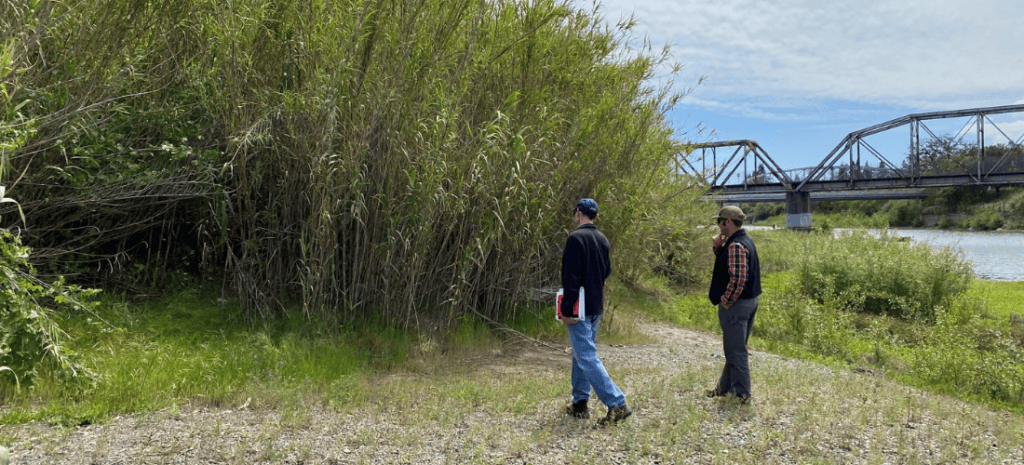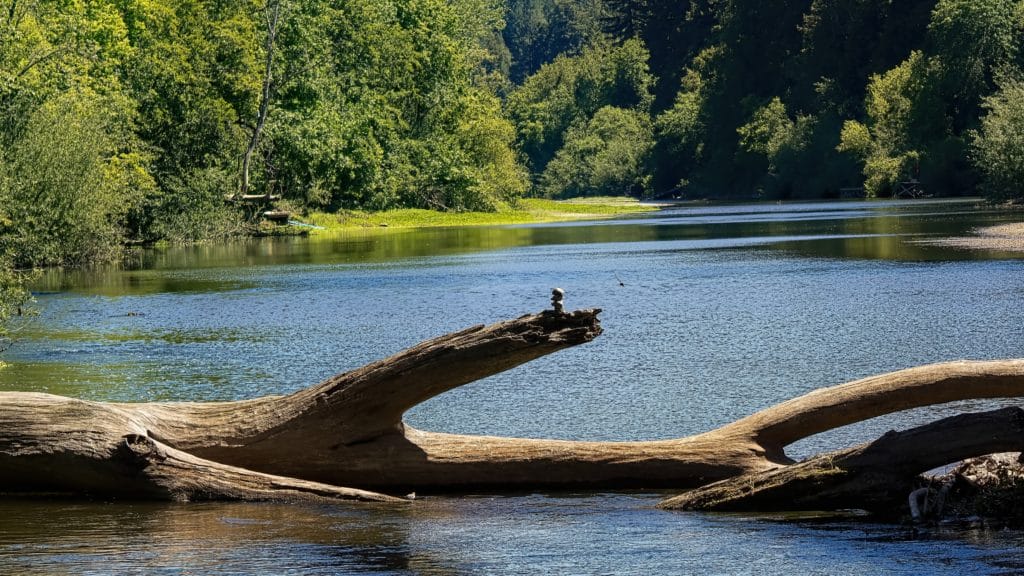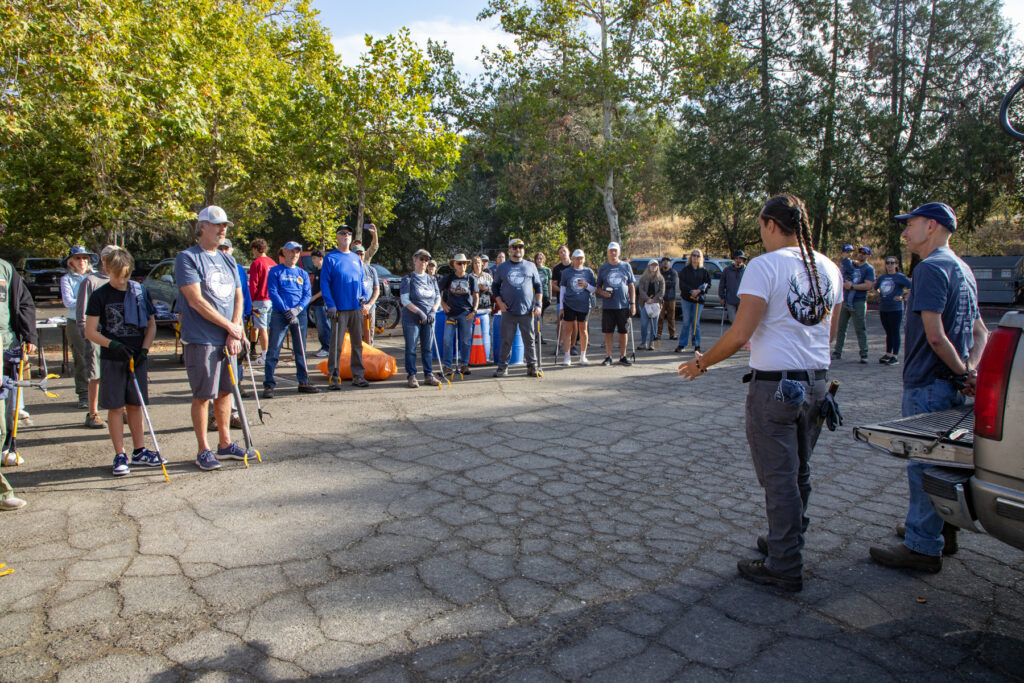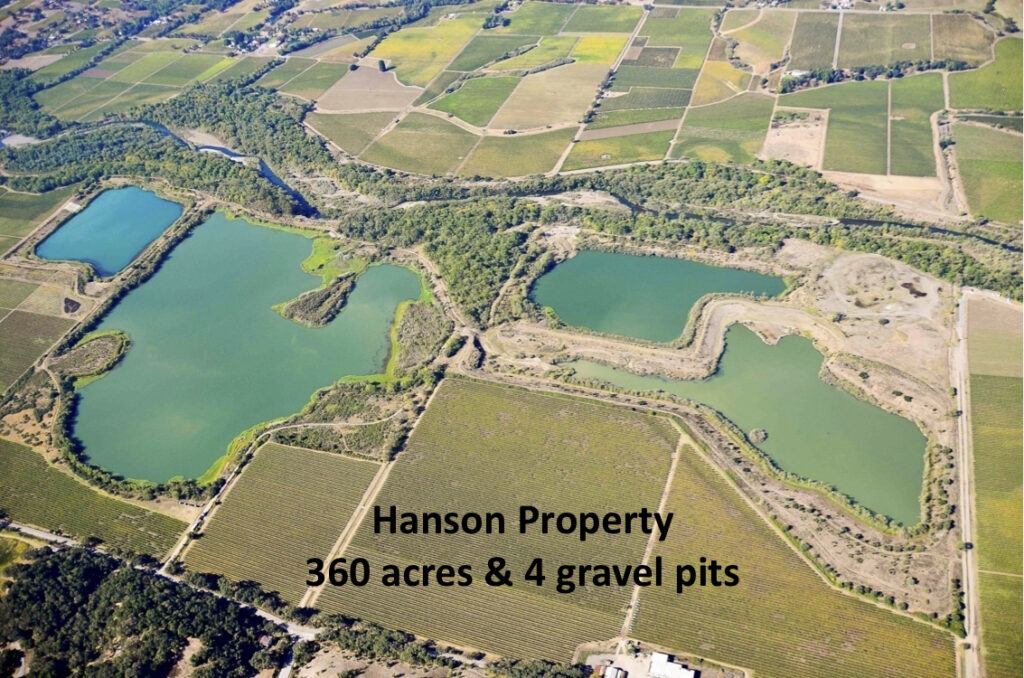The numerous recent fires along the Russian River in Healdsburg present a very significant hazard to the city and its residents. Russian Riverkeeper is teaming up with Healdsburg Fire to combat the problem by removing thick stands of Arundo donax from 200 acres along the river, from Rio Lindo Academy downstream to the 101 bridge. One strategy to prevent the intensity and impact of wildfires is through ecological restoration to mimic historical conditions when frequent low-intensity fires burned through this region.

What Problems Does Arundo Cause?
Arundo, or more commonly known as Giant Reed, is a thirsty invasive plant that more than doubles the fuel load for wildfire. Giant Reed takes more water from our river and ecosystem than any other plant on the river. Local research has shown it consumes roughly one million gallons of water per acre leading to significant depletions of the river flow. Giant reed is also suspected of altering hydrological regimes and reducing groundwater availability by transpiring large amounts of water from aquifers.
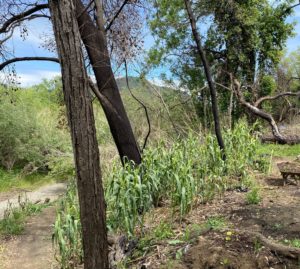 In addition to being a water hog, Giant Reed displaces native plants and associated wildlife species because of the massive stands it forms. It reduces habitat and food supply, particularly for insect populations. It provides little to no shading to the in-stream habitat, leading to increased water temperatures and reduced habitat quality for aquatic wildlife. Lastly, it outcompetes native plants when recovering from wildfire.
In addition to being a water hog, Giant Reed displaces native plants and associated wildlife species because of the massive stands it forms. It reduces habitat and food supply, particularly for insect populations. It provides little to no shading to the in-stream habitat, leading to increased water temperatures and reduced habitat quality for aquatic wildlife. Lastly, it outcompetes native plants when recovering from wildfire.
Removing Arundo will help improve flows in the river, which can prevent harmful algae blooms. It alters channel morphology by retaining sediments and constricting flows and navigability. Arundo can promote bank erosion because it blocks normal channel meander processes and pushes the river into banks and locks it in place. Uprooted plants also pose clean-up problems when deposited on banks or in downstream estuaries and during floods create hazards when trapped behind bridges and other structures.
How Can We Get Rid of It?
Minor infestations can be eradicated by manual methods, especially where sensitive native plants and wildlife may be damaged by other methods. Hand pulling is effective with new plants less than six feet in height, being sure to remove all of the rhizome material and not triggering erosion. Plants can be dug up using hand tools (pick-axe, mattock, and shovel) and with a backhoe or excavator, where conditions and permits allow further away from the water’s edge. After the first treatment, regrowth is inevitable, so we will be returning to treat the foliage with very careful herbicide application.


